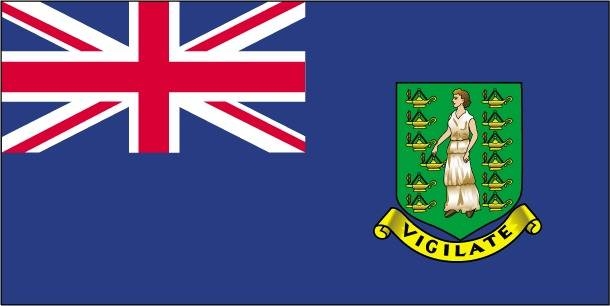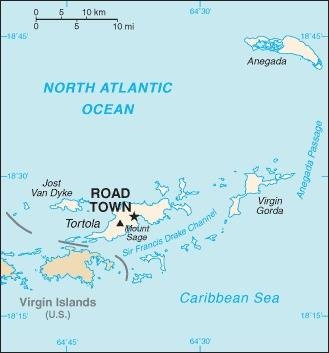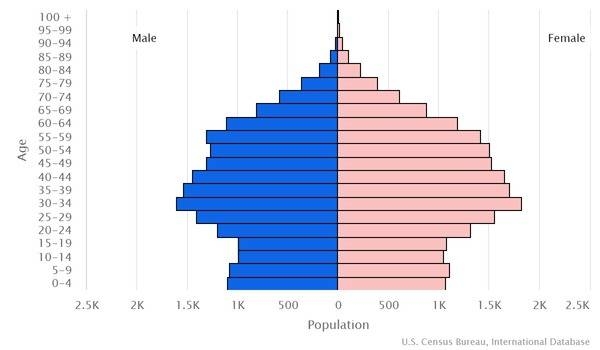Country Summary




Introduction
Background
First inhabited by Arawak and later by Carib Indians, the Virgin Islands were settled by the Dutch in 1648 and then annexed by the English in 1672. The islands were part of the British colony of the Leeward Islands (1872-1960); they were granted autonomy in 1967. They maintain strong ties to the nearby US Virgin Islands and Puerto Rico.
Geography
Area
total: 151 sq km
land: 151 sq km
water: 0 sq km
Climate
subtropical; humid; temperatures moderated by trade winds
Natural resources
NEGL; pleasant climate, beaches foster tourism
People and Society
Population
38,632 (2022 est.)
Ethnic groups
African/Black 76.3%, Latino 5.5%, White 5.4%, mixed 5.3%, Indian 2.1%, East Indian 1.6%, other 3%, unspecified 0.8% (2010 est.)
Languages
English (official), Virgin Islands Creole
Religions
Protestant 70.2% (Methodist 17.6%, Church of God 10.4%, Anglican 9.5%, Seventh Day Adventist 9.0%, Pentecostal 8.2%, Baptist 7.4%, New Testament Church of God 6.9%, other Protestant 1.2%), Roman Catholic 8.9%, Jehovah's Witness 2.5%, Hindu 1.9%, other 6.2%, none 7.9%, unspecified 2.4% (2010 est.)
Population growth rate
1.91% (2022 est.)
Government
Government type
Overseas Territory of the UK with limited self-government; parliamentary democracy
Capital
name: Road Town
Executive branch
chief of state: King CHARLES III (since 8 September 2022); represented by Governor John J. RANKIN (since 29 January 2021)
head of government: Premier Dr. Natalio WHEATLEY (since 5 May 2022)
Legislative branch
description: unicameral House of Assembly (15 seats; 13 members - 9 in single-seat constituencies and 4 at-large seats directly elected by simple majority vote and 2 ex-officio members - the attorney general and the speaker - chosen from outside the House; members serve 4-year terms)
Economy
Economic overview
British Caribbean island territorial economy; strong tourism and services industries; vulnerable to hurricanes; navigating public debt insolvency since 2008 Crisis; considered a tax haven; high electrification costs; major rum exporter
Real GDP (purchasing power parity)
$500 million (2017 est.)
Real GDP per capita
$34,200 (2017 est.)
Agricultural products
fruits, vegetables; livestock, poultry; fish
Industries
tourism, light industry, construction, rum, concrete block, offshore banking center
Exports
$23 million (2017 est.)
Exports - partners
Malta 30%, Seychelles 29%, Switzerland 14% (2019)
Exports - commodities
recreational boats, aircraft, diamonds, paintings, precious stones (2019)
Imports
$300 million (2017 est.)
Imports - partners
Germany 32%, United States 22%, Italy 9%, France 7%, Seychelles 7% (2019)
Imports - commodities
recreational boats, aircraft, refined petroleum, cars, furniture (2019)
Page last updated: Friday, December 23, 2022
